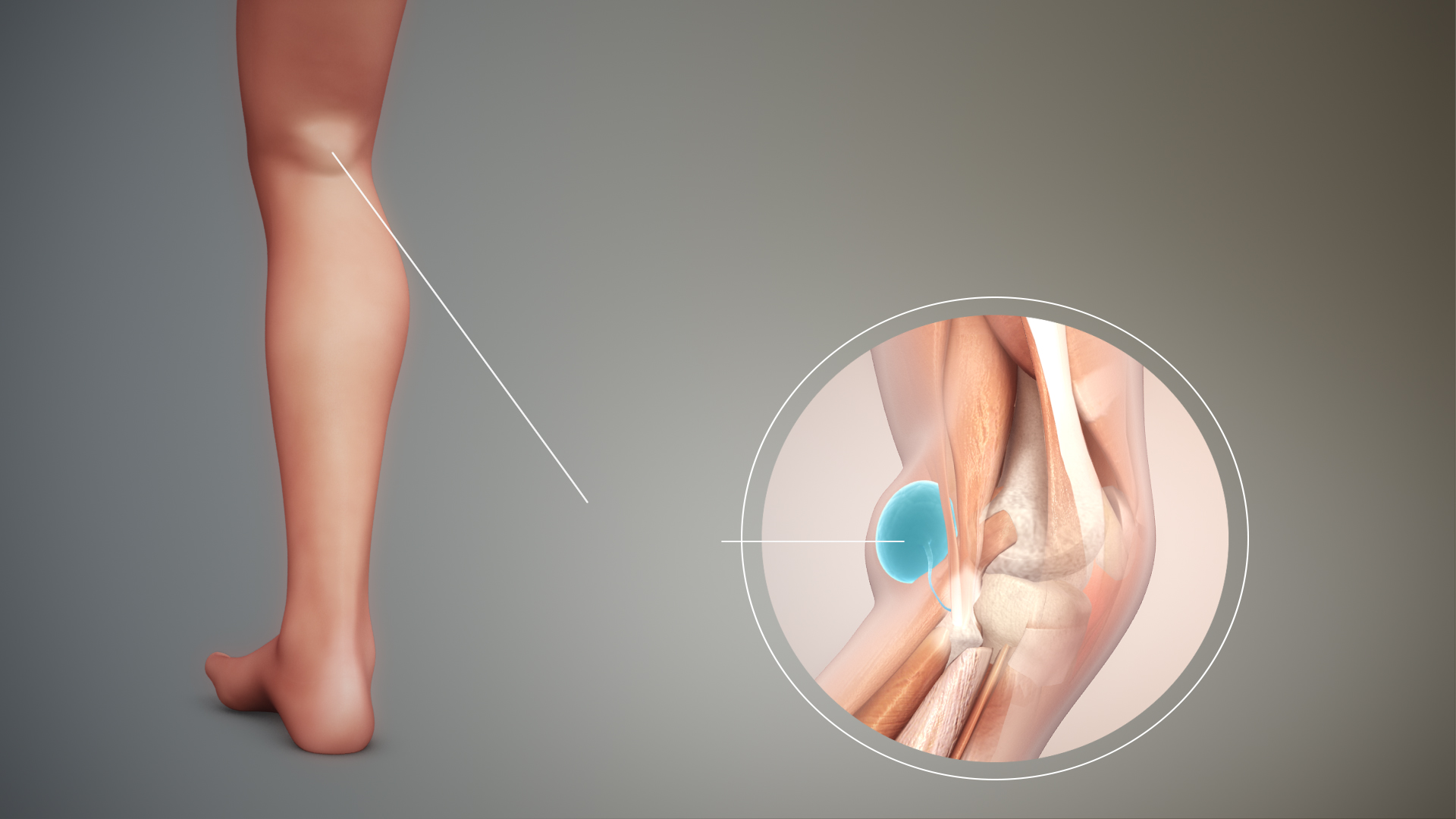The human knee produces fluid for its proper functioning and lubrication. The fluid is known as synovial fluid. When produced in excess amounts, synovial fluid can accumulate behind the knee -- termed a popliteal bursa. This condition is called Baker's cyst, or alternatively, popliteal cyst.
Baker's cyst causes stiffness in your leg which will lead to difficulty in bending your legs, standing for long hours, or carrying out any activity which results in sustained pressure on the legs. The condition often occurs post the onset of arthritis, or after a cartilage tear.
Baker's cyst can be highly painful and discomforting, but it rarely causes serious issues in the body, and is easily treatable. It also can resolve on its own.
Symptoms
Symptoms of a baker's cyst are common and can be easily confused for symptoms of some other condition. In a few cases, baker's cyst is completely painless and you escapes unnoticed. Common signs and symptoms are:
- A bulge behind knees or in upper calf.
- Knee pain
- Inability to swing your legs.
- Stiffness in legs.
- Joint locking.
Causes
Common reasons for why the knee starts producing excess synovial fluid include:
- Arthritis- People with all forms of arthritis tend to have Baker's cyst. Also, it is more common for women above 40 to have baker's cyst if she is suffering from arthritis.
- Gout- This is a type of arthritis that leads to the formation of uric acid in blood. It has been observed that such people are more prone to Baker's cyst.
- Cartilage Rupture- Many times an injury that causes cartilage rupture, also leads to excessive generation of synovial fluid, its subsequent accumulation, and popliteal bursa.
Treatment
Often you don't need any kind of treatment for baker's cyst it gets cured on its own. In some cases, home remedies and lifestyle changes are sufficient. These changes can be-
RICE precautions- RICE stands for Rest, ice, compression, and elevation. Give ample rest to knee joints, also you should use a compression bandage, try to apply an ice pack, and keep your knees elevated, especially while sleeping.
Physiotherapist can also prescribe exercises that help ease pain and stiffness. In very rare cases, a doctor visit may result in further treatments such as:
- Arthroscopy- A major knee damage, because of physical injury or some other condition, may compel a surgical removal of the cyst, and complete healing of the injury. A surgeon diagnoses and cures problems of joints using an arthroscope.
- Fluid Drainage- Fluid drainage is a procedure where the surgeon drains the synovial fluid from the popliteal bursa using a needle. Mostly this is performed with ultrasound guidance.
Disclaimer: The information in no way constitutes, or should be construed as medical advice. Nor is the above article an endorsement of any research findings discussed in the article an endorsement for any of the source publications.









